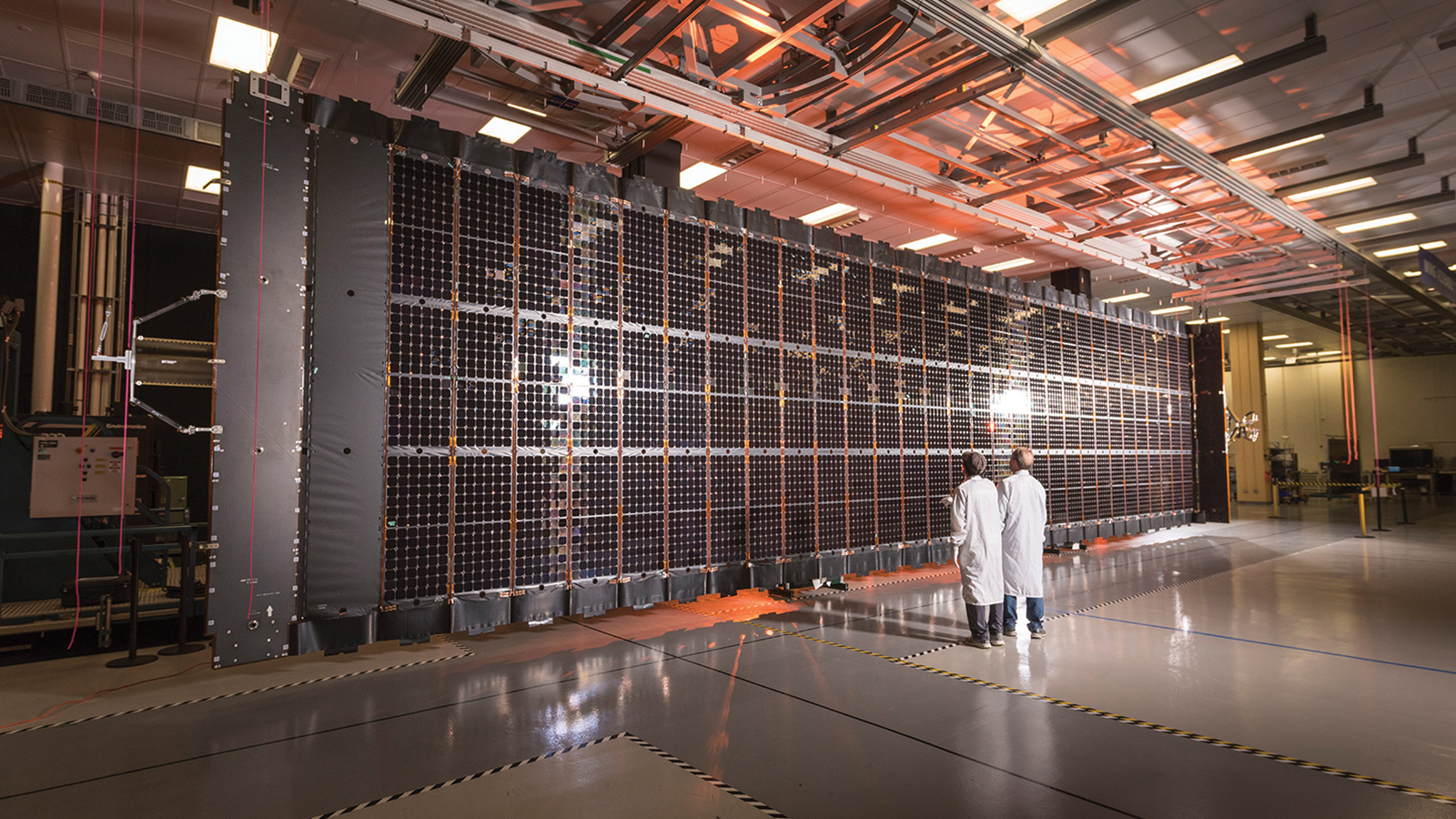Stay Up to Date
Submit your email address to receive the latest industry and Aerospace America news.
The Aerospace Power Systems Technical Committee focuses on the analysis, design, test or application of electric power systems or elements of electric power systems for aerospace use.
NASA gave the U.S. Department of Energy the go-ahead in July to fuel the Mars 2020 rover’s Multi-Mission Radioisotope Thermoelectric Generator with plutonium dioxide in preparation for the launch to the red planet in July 2020. The MMRTG’s total mass is about 45 kilograms, of which 4.8 kg is plutonium dioxide — the source of the steady supply of heat to convert into electricity for storage in two lithium-ion rechargeable batteries. The electrical power system on the Mars 2020 rover produces about 110 watts at launch and will decline a few percent per year for a 14-year operational life. Unlike with solar panels, with the MMRTG engineers get the flexibility to operate the rover’s instruments at night, during dust storms and through the winter.
Aboard the Mars 2020 rover as one of the science payloads is the solar-powered Mars Helicopter, which was attached to the belly of the rover in August. The drone has a mass of 1.8 kg and will demonstrate flight stability on the surface of Mars and scout the best driving route for the rover. Solar cells will recharge its batteries, which are six lithium-ion cells with a nameplate capacity of 2 ampere-hours.
The first European Service Module, built by Airbus Defense and Space, was mated to NASA’s Orion crew module in July. Built by Lockheed Martin Space, the Orion is attached to the front of the service module. The combined assembly was to undergo critical thermal-vacuum testing in late 2019 at NASA’s Plum Brook Station in Ohio and return to Kennedy Space Center in Florida in early 2020 to begin launch preparations, including installation of the four solar array wings. The electrical power source on the European Service Module consists of four solar array wings comprised of three solar panels per wing. The solar array wings provide approximately 11.2 kilowatts of total power at 120 volts. The solar cells are the latest triple-junction technology, provided by New Mexico-based SolAero Technologies. The solar array orientation is controlled by the two-axis solar array drive mechanism, which can swivel between minus 35 degrees and plus 25 degrees on the inner axis and rotate fully from 0 to plus 360 degrees on the outer axis to sun-track for maximum power. The four wings are folded against the crew module adapter of the service module during launch and extend out 7 meters after launch into low Earth orbit. A Space Launch System rocket will launch the Orion spacecraft on the uncrewed Artemis-1 mission around the moon, targeted for before the end of 2020.
Lockheed Martin’s A2100TR satellite bus with fourth-generation 25-kW Multi-mission Modular solar Array, or MMA, launched and deployed on orbit in February on the SaudiGeoSat-1/HellasSat-4 communications satellite, designed for 15 years of on-orbit operation. SaudiGeoSat-1/HellasSat-4 has electric propulsion Hall Current thrusters powered by the MMA to transfer the satellite to its geostationary final orbit. The orbit transfer after launch was completed on schedule, and the satellite was to enter service in late 2019 at its assigned orbit at 39 degrees east longitude. In addition to this mission, a second commercial A2100TR satellite also powered by the MMA, Arabsat-6A, was launched in April on the first Falcon Heavy booster with a commercial payload. This satellite also used a 25 kW version of the MMA, modularly designed to support both lower- and higher-power satellite configurations. As of the beginning of October, this satellite was also operating nominally in its assigned orbit and was to enter service in late 2019. A third lower-powered 13 kW MMA variant was scheduled to launch in December at the earliest on an A2100TR satellite, JCSat-17.
Contributors: John Gibb and Scott Billets
Related Posts
Stay Up to Date
Submit your email address to receive the latest industry and Aerospace America news.




